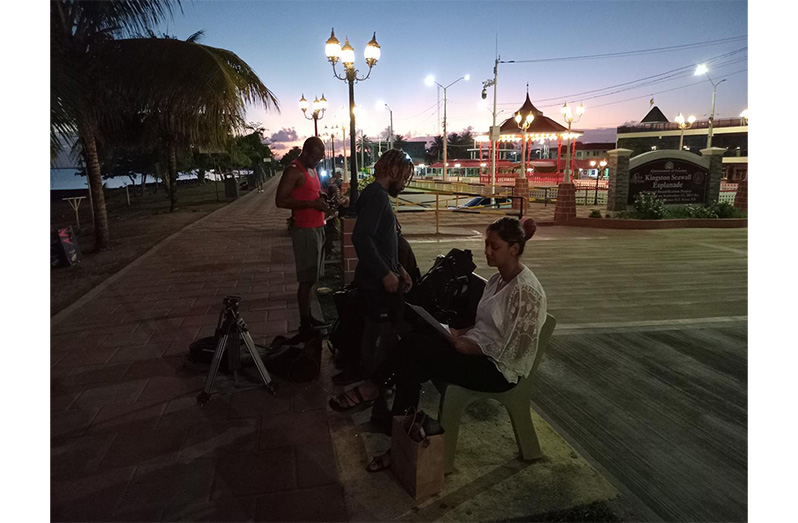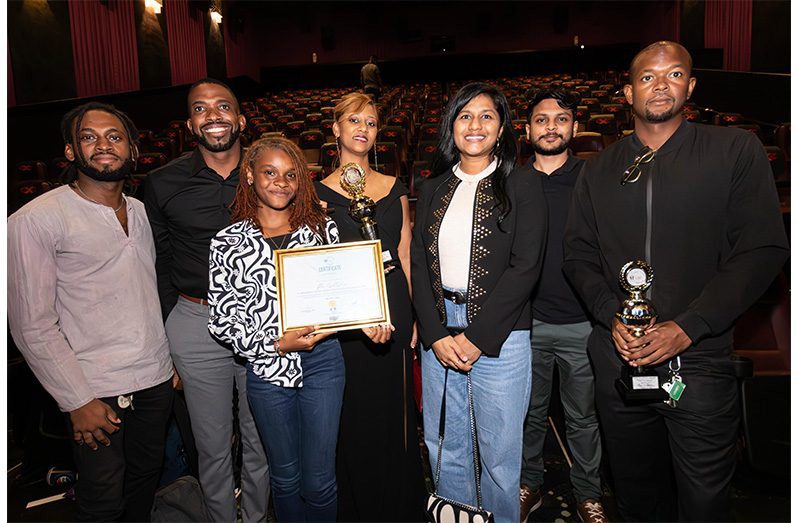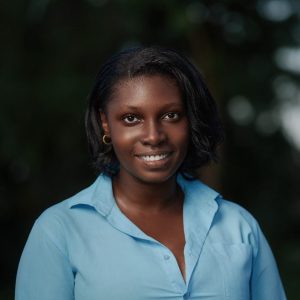The short film challenging the myth of racial harmony with raw realism and bold storytelling
GUYANA is no stranger to cultural differences and the challenges that stem from racial bias. Often, the topic of race is addressed through songs, speeches, and imagery promoting unity and acceptance. But for some, these messages may feel unconvincing. Breaking the mould, Rae Wiltshire’s short film Between Oceans approaches racism from a different angle. Shot in black and white by a team of young Guyanese creatives, the film explores the relationship between an interracial couple in Guyana. Starring Marisa Morgan-Bonie, Mark Luke-Edwards, and Latiefa Agard, Between Oceans examines racial bias through a realistic lens, forcing its audience to ask: What does acceptance truly mean?
Between Oceans: Racism Through a Realistic Lens
Unveiled last week at the Ethnic Relations Commission (ERC) and winning first place, the film has resonated deeply with Guyanese audiences, many of whom praised it for its authenticity and raw realism. Producer and director of the film, Rae Wiltshire, spoke with Pepperpot Magazine about the inspiration behind the concept and what it took to bring it to life.
“It was a bit tricky,” Rae shared. “We had a really fast turnover time, because the ERC basically gave us—I think I saw the thing within a month, or two weeks. And if you know anything about production, you know you have to write a script, you have to cast—there’s a lot of stuff—and it was a very short time. So that was very difficult.”
Though real-life events and scenarios inspired the film, its unique approach to exploring the contrast between tolerance and acceptance came from Rae’s personal perspective. An experienced filmmaker and writer, Rae chose to highlight the harsh realities of racism in Guyana and beyond—realities that often defy the ideal of unity. The short film follows husband and wife duo Isaiah (played by Mark Luke-Edwards) and Vanessa (played by Marisa Morgan-Bonie). The plot centres on the real-life tension between Vanessa’s mother and her husband, Isaiah—a reflection of the subtle and overt racism many face in their own homes.

The Team Behind Between Oceans
Between Oceans, along with the other entries in this year’s ERC film competition, reflects the growth of Guyana’s filmmaking industry. This year’s event saw 14 entries. Rae’s film had a dedicated and passionate team, both on and off-screen. Behind the scenes, Kevin Garbaran and Jaheim Jones handled sound; cinematography was done by Shakeem Walcott and Joshua ‘Tujay’ Macey; and Akeen King worked as the colourist. The team aimed to deliver a professional production with a distinct creative style.
Like many of Guyana’s leading filmmakers, Rae transitioned from theatre to film. It was in the theatre space that he encountered some of the country’s most inspiring creatives. Despite the field’s growth, filmmaking remains a challenging industry, especially financially.
“One of the hardest parts of filmmaking is getting money to do it. Just not having that financial resource is the most difficult thing. You also have to ask people for favours so you can complete your film,” Rae shared. He added, “We didn’t have no money to make Between Oceans. I had money, like $30,000, that we spent on catering.”
Training is another challenge facing the industry. While Guyana has no shortage of passionate and talented individuals, Rae believes more structured training could help nurture and expand the pool of emerging filmmakers.
“If we had funding and training of individuals and these kinds of things, that would’ve been really good,” he said. He also noted, “I’ve taken it upon myself to train filmmakers in this endeavour. When I made Eating for Power, it was just me doing a lot of roles. I got almost burned out—well, I did get burned out. And I told myself, okay, you can’t do this on your own.”
As the local film industry continues to expand with new festivals and fresh faces, Rae offers some advice to aspiring filmmakers: immerse yourself in literature as a foundation for film, explore cinema from around the world, and do it for passion, not fame.
“Understand every aspect of production that you’re in. Even if you’re not going to be working in it, you have to communicate with people who work in that department. The more you know, the better you’ll be able to communicate, and the better your film is going to be,” he said.
Between Oceans is currently available on YouTube alongside the other winning films from this year’s ERC competition. If you’re looking for a thought-provoking watch with familiar faces and relevant themes, give Between Oceans a look, and ask yourself some hard questions.




.jpg)










